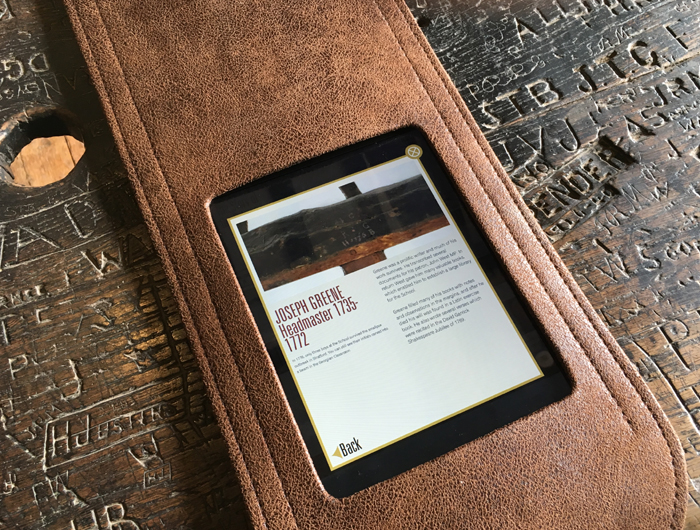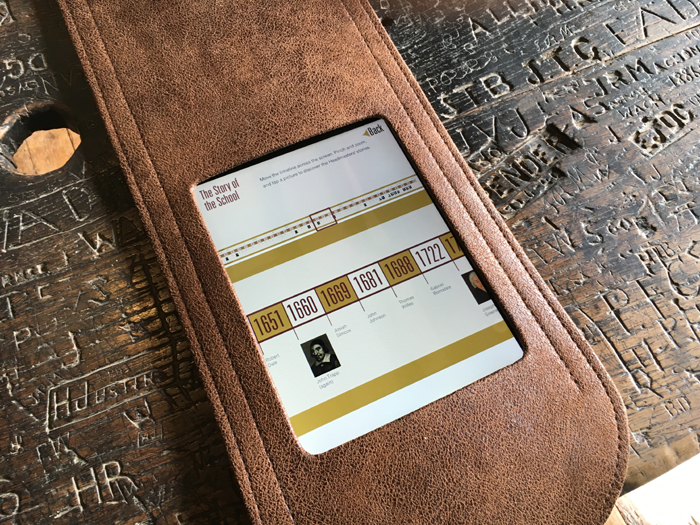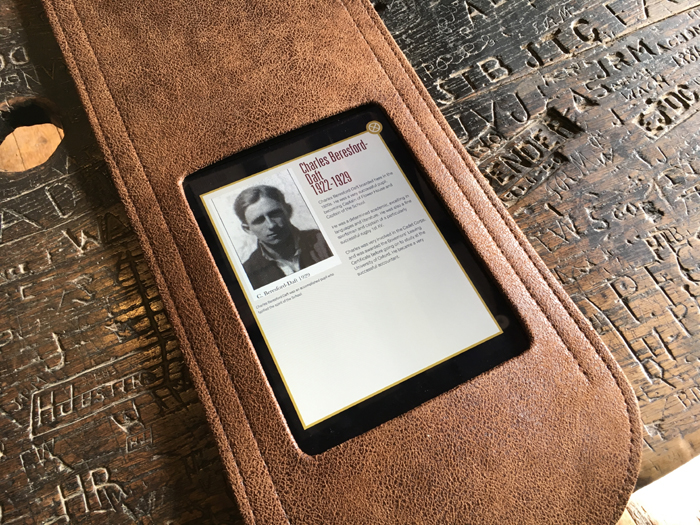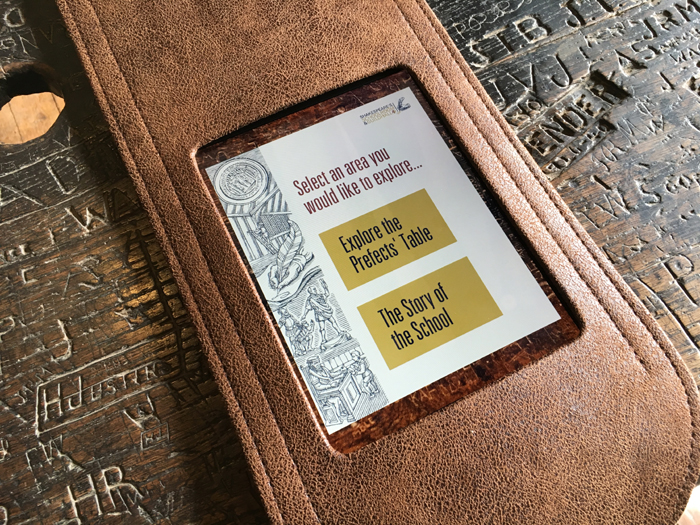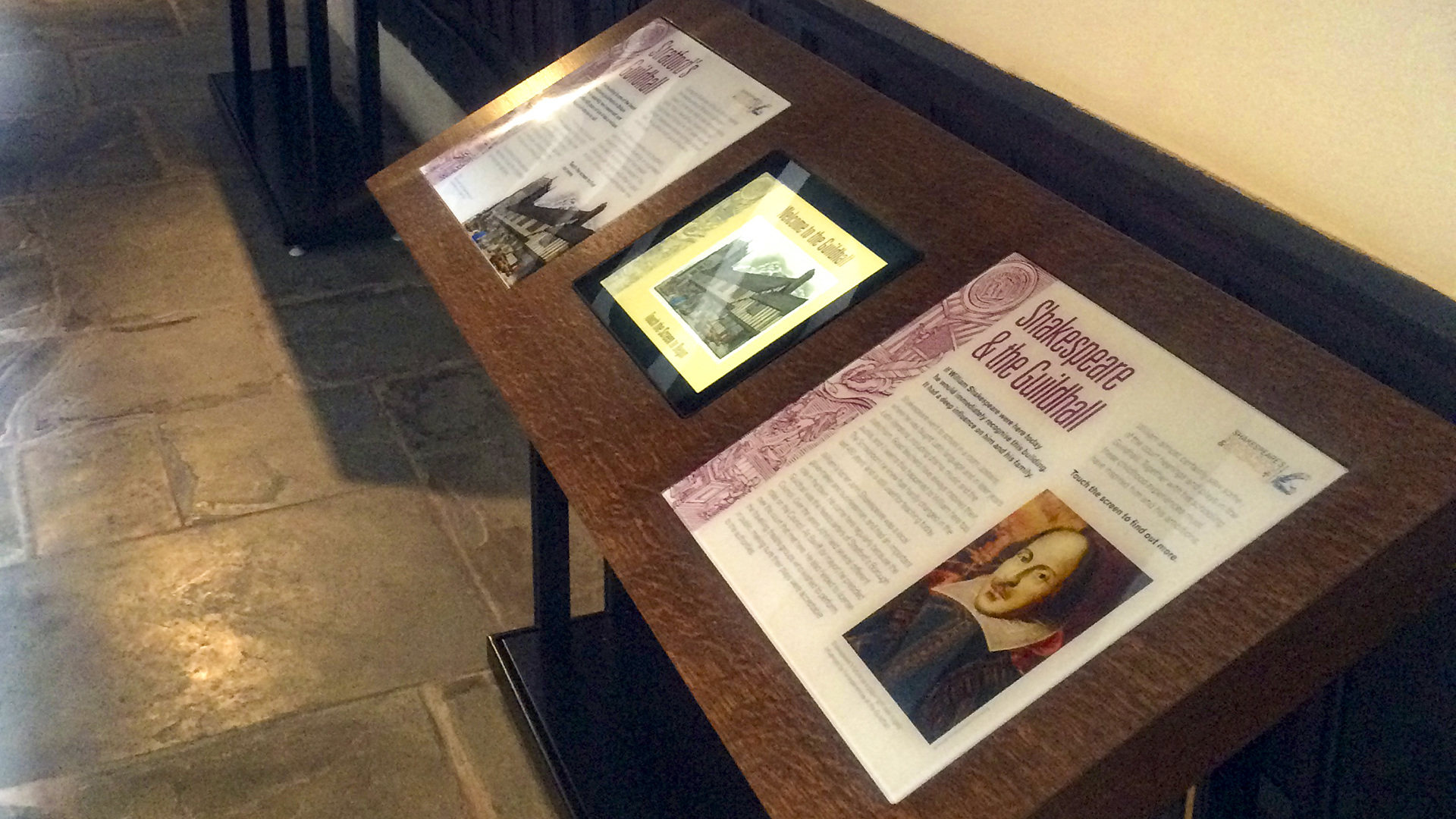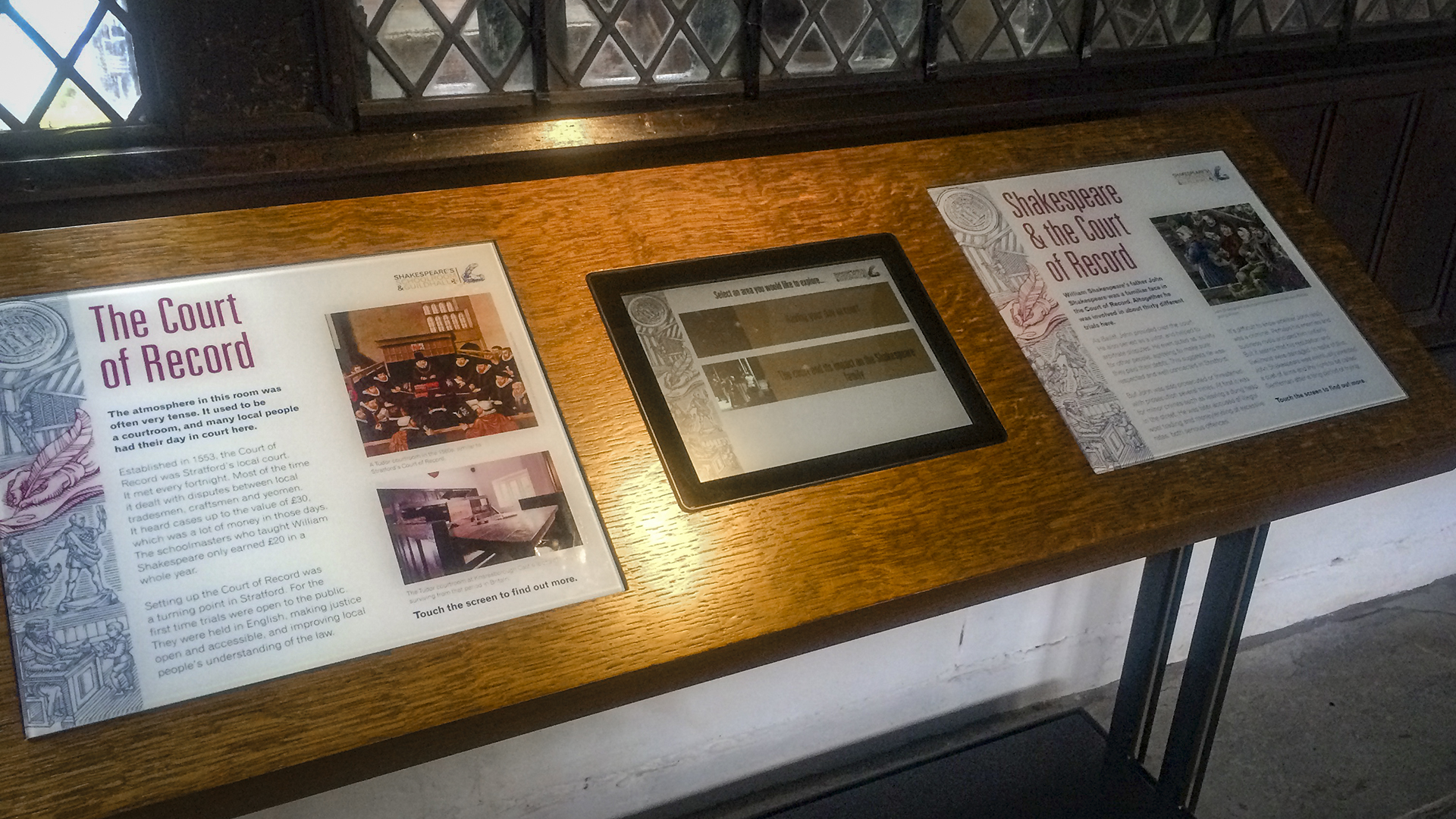In the year of the 400th anniversary of the death of William Shakespeare, it has been particularly interesting to work with Imagemakers on the exhibits that interpret a “missing chapter” in the playwright’s history – Stratford’s Guildhall where Shakespeare attended school and probably saw professional theatre for the first time.
Of international significance, this 15th-century building is one of the finest surviving medieval guildhalls in Britain. It served originally as the headquarters of the Guild of the Holy Cross. From 1553 it was the headquarters of Stratford Borough Council, as well as a civil court and the town armoury. As well as its close associations with the Shakespeare family, the Guildhall is distinguished by its rare 15th- and 16th-century wall paintings.
Because of the historic nature of the building and the artefacts within it – particularly the school table dating back to the 18th century with its collection of initials carved by old boys of King Edward VI School over the years – it was important that the exhibits were both sympathetic to the nature of the building and had minimal impact on its structure.
Of international significance, this 15th-century building is one of the finest surviving medieval guildhalls in Britain. It served originally as the headquarters of the Guild of the Holy Cross. From 1553 it was the headquarters of Stratford Borough Council, as well as a civil court and the town armoury. As well as its close associations with the Shakespeare family, the Guildhall is distinguished by its rare 15th- and 16th-century wall paintings.
Because of the historic nature of the building and the artefacts within it – particularly the school table dating back to the 18th century with its collection of initials carved by old boys of King Edward VI School over the years – it was important that the exhibits were both sympathetic to the nature of the building and had minimal impact on its structure.
